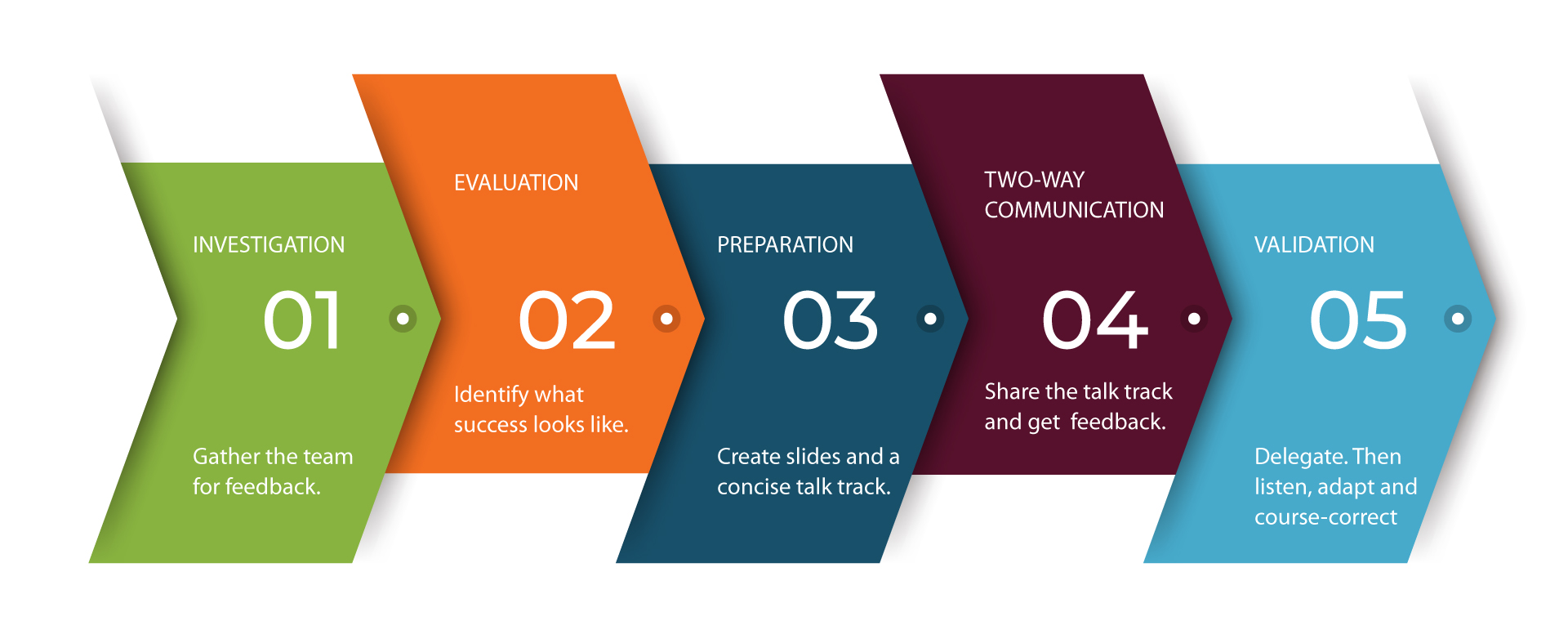One of our favorite stories of a business initiative gone awry is now over 10 years old. It involves a fast-track, yet high-profile creative project that required use of a third-party advertising agency. There were whispers that the project was going off of the rails, and in a status meeting before regrouping with the agency, the exasperated marketing manager claimed that the agency needed to be fired or the project would never be successfully launched. Someone in the meeting asked whether or not the agency was following the creative brief, and if revisiting the content within the creative brief could help get things back on track.
“There was no time for a creative brief! This was a fast-turn project” was the answer.
…and then there was silence in the room…
This scenario is all too common. When new projects or initiatives land in a leader’s lap, it is as if a timer automatically starts and the pressure mounts to quickly get people moving and taking action to help get the project moving along. So often, a fatal flaw is that the leader does not pause to plan and ensure that everyone is well versed on the initiative, their role in the initiative’s success, the expected outcome(s), and how individuals and teams are going to work together to get the project across the finish line. Every time this upfront planning is skipped, disaster is waiting in the wings.
So how can we easily avoid this situation?
The answer lies with following the five simple steps below. We know and feel your pain as you think that you now need to add five more steps when you already have no spare time and are dealing with high stress levels. However, you must trust, and realize that these steps are actually going to save you both time and stress as the project progresses.
STEP ONE: Investigation
The goal here is to take the knowledge of the initiative and gather with as many stakeholders as possible to determine what the critical success factors are for completing the initiative and any “gotcha” barriers that might get in the way.
Action Plan:
This can be done in the form of a brainstorming session with a large group of people or a few meetings with smaller groups. In either case, the leader should be in question asking mode. These are some of the questions that should be surfaced. As a leader, it is critical to capture all of the feedback.
- What do we need to do to make this happen?
- Who needs to be involved?
- Where will we run into problems?
- What options are available to get to the finish line?
STEP TWO: Evaluation
Using the feedback from the various stakeholders, it is now time for the leader to think through all of the input, and determine what a successful plan will look like. The net result would be the leader having a clear vision of how the initiative should be launched.
Action Plan:
- Accomplishing this might be as simple as spending an hour or two of uninterrupted time formulating an action plan.
- Or it could involve circling back with a few stakeholders to clarify initial feedback.
STEP THREE: Preparation
So now you should have your clear vision in place. Time for a quick email to everyone, right? Wrong!
Action Plan:
- While there may be pressure to show that you have started on the initiative, taking time to create some simple slides and a concise talk track is necessary to make sure you can explain the initiative to anyone in detail.
- The final litmus test here is to take your slides and talk track, and then boil down the story into 90 seconds or less as your “elevator pitch”.
- You can use this condensed version for future impromptu conversations.
STEP FOUR: Two-Way Communication
Only at this point are you ready for what most people would call a “kick-off” meeting. Gather the stakeholders together and share your slides and talk track for the project. You should not adjourn this meeting until all stakeholders have a chance to have their voices heard and clearly understand the initiative.
Action Plan:
Sharing slides and your talk track are only one part of this phase. The second is to again ask questions to the stakeholders attending.
- What are we missing?
- What is going to be challenging for the completion of this project?
- How can we best work together to make sure we don’t lose momentum?
STEP FIVE: Validation
Only at this phase, is it safe for you, as the leader, to start the delegation process. And at this phase, it is critical for you to delegate, and not try to manage all of the details of the project yourself. (How to do THAT is a whole, separate topic for another blog post!)
Action Plan:
- Where you still will need to be involved is in bringing back the group together on a regular basis — this could be weekly, bi-weekly, monthly — depending on the specific project.
- Talk through progress, roadblocks, upcoming milestones, etc.
- Some teams may have assigned project management resources to manage these meetings, but regardless, you as the leader, still need to have a role here to listen, adapt and course-correct the team as needed.
Establishing Realistic Timelines
Collectively, the first four steps in this process could be completed in 1-2 weeks. In some cases, with more complex initiatives, that timing could stretch to 3-4 weeks. Don’t be scared of this additional timeframe or think that you’ll fall behind on completing the initiative by adding extra steps. With a well-organized plan and a well-informed team, you are much more likely to move quickly and avoid pitfalls as your project takes off. That alone can help reduce your time involvement and stress levels — and keep you focused on the next high-level project that may be heading your way.
Contact Us Today
We make it easy to jump start success. Simply contact us and share your current team challenge or need, and we’ll respond with program ideas to innovate your team performance.


